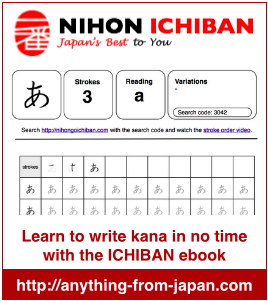Japanese i-adjectives also can express situations in the past. Whereas in English you have to use “was” in front of the word, i-adjectives can build the past on its own. Remove the い (i) at the end of the plain form and add かった (katta) to the stem of the i-adjective as described in the following examples:
- 高い => 高- => 高 + かった => 高かった
- takai => taka- => taka + katta => takakatta
| Plain Form | Romaji | Meaning | Negation | Romaji | Meaning |
| 高い | takai | high | 高かった | takakatta | it was high |
| 安い | yasui | cheap | 安かった | yasukatta | it was cheap |
| 美味しい | oishii | tasty | 美味しかった | oishikatta | it was tasty |
| 広い | hiroi | spacious | 広かった | hirokatta | it was spacious |
| 寂しい | sabishii | lonely | 寂しかった | sabishikatta | it was lonely |
Example
| Kanji | この話はあまり面白くなかったです。 |
| Furigana | このはなしはあまりおもしろくなかったです。 |
| Romaji | kono hanashi wa amari omoshirokunanakatta desu. |
| English | This story was not very interesting. |
Related articles:


Are the adjectives in the above chart wrong when it lists them as negative, should they be listed as past tense?
I see they have been changed, thanks.
Sorry, I realized myself shortly after publishing. I had used the past as a template and missed to change the translation.
Example is a kunai one not a katta one
Mistake corrected thank you for noticing.
Hi, would like to ask why the past form of hiroi is hirokattai? bec it says that drop the “i” and affix the katta, im a bit confused if there is/are words wherein the “i” is placed at the end of the word
Thanks…
Hi, this was well observed. Actually we was a typo and we immediately corrected it.
Thanks for pointing out the mistake.